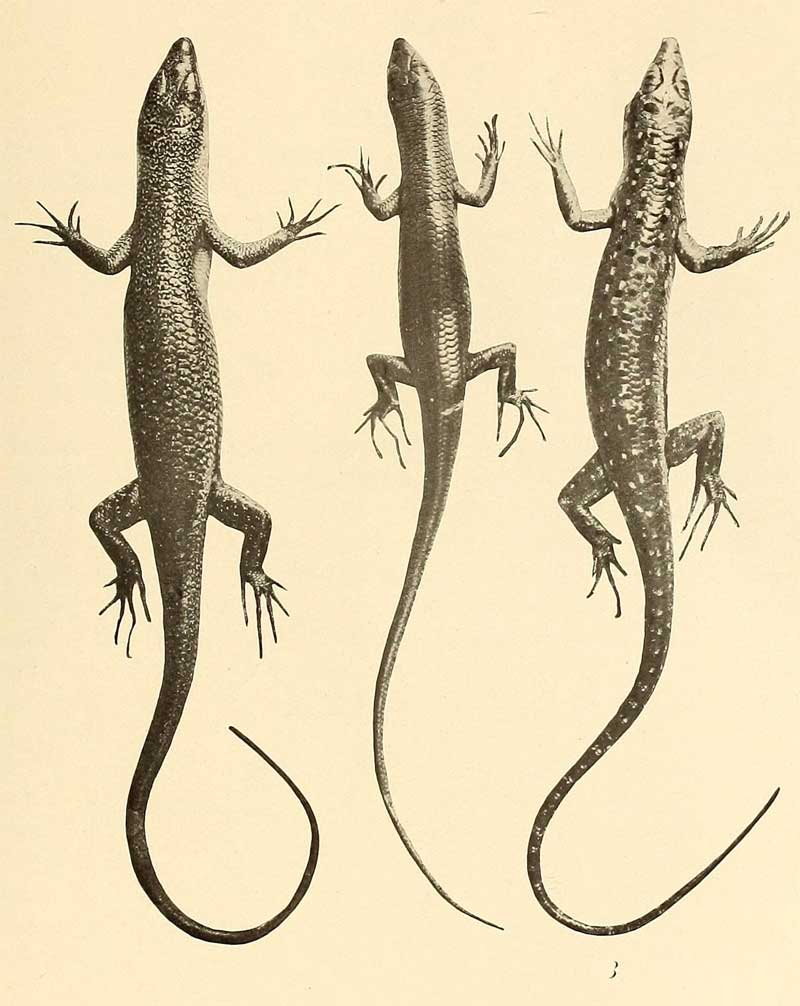
Superregnum: Eukaryota
Cladus: Unikonta
Cladus: Opisthokonta
Cladus: Holozoa
Regnum: Animalia
Subregnum: Eumetazoa
Cladus: Bilateria
Cladus: Nephrozoa
Superphylum: Deuterostomia
Phylum: Chordata
Subphylum: Vertebrata
Infraphylum: Gnathostomata
Megaclassis: Osteichthyes
Cladus: Sarcopterygii
Cladus: Rhipidistia
Cladus: Tetrapodomorpha
Cladus: Eotetrapodiformes
Cladus: Elpistostegalia
Superclassis: Tetrapoda
Cladus: Reptiliomorpha
Cladus: Amniota
Classis: Reptilia
Cladus: Eureptilia
Cladus: Romeriida
Subclassis: Diapsida
Cladus: Sauria
Infraclassis: Lepidosauromorpha
Superordo: Lepidosauria
Ordo: Squamata
Subordo: Scincomorpha
Superfamilia: Scincoidea
Familia: Scincidae
Subfamilia: Lygosominae
Genus: Lamprolepis
Species: Lamprolepis smaragdina
Name
Lamprolepis smaragdina (Lesson, 1829)
References
Links
Uetz, P. & Hallermann, J. 2022. Lamprolepis smaragdina. The Reptile Database. Accessed on 7 October 2019.
Vernacular names
English: Emerald Skink
The emerald tree skink (Lamprolepis smaragdina), sometimes (ambiguously) known as "green tree skink" or "emerald green skink". It is a non-threatened species although it not commonly seen but it is, however, becoming more and more popular in the exotic pet trade. In the Philippines, it is called Tabili in the Cebuano language.
Description
The emerald tree skink is generally bright lime green in color, with large black eyes rimmed with yellow. However, their rear limbs or the lower half of their body may be medium brown with white speckling. In some cases, the entire body is brown or speckled with black. They are generally between 8.5-10" in total length.[2]
Names
It is known as 'kuka' in the Kotos Amarasi language of West Timor, Indonesia.[3]
Evolutionary genetics
Linkem, et al. (2013) found that the most divergent clades of L. smaragdina were in Sulawesi. Oceanic populations represent the most recent expansions. The origin of populations on most islands is attributed primarily to waif dispersals prior to human colonization, although human-aided dispersals cannot be ruled out for some populations.[4]
Geographical distribution
It is found in arboreal forests of Taiwan, Palawan, Luzon and Sulu archipelagoes in the Philippines, New Guinea as well as the Indo-Australian archipelago and down south to the Solomon and Santa Cruz islands.
The emerald tree skink is frequently found in palm plantations in disturbed coastal areas.[4]
Feeding habits and diet
It is mostly carnivorous, feeding on insects and other small creatures, although occasionally it may devour fruit and leafy plants. In some areas, it even steals dog food.
Behavior
They prefer bare tree trunks without climbing plants. Several have even been sighted on minute islands with very little greenery, the record being four palm trees. It is a highly active species. Always on the move and is very squirmy if handled. They are an unaggressive species and sometimes observed to form little groups to gang up on bigger prey.
Reproduction and breeding habits
Courtship ritual is the same as most lizards. It as an oviparous species meaning it lays eggs rather than bear live young like most members of the skink family do. Eggs are usually laid in clusters of two. They can be easily bred in captivity and may live an average 7–12 years in captivity.
References
Shea, G.; Iskandar, D.; Rico, E.L.; Gonzalez, J.C.; Hamilton, A.; Allison, A.; Tallowin, O.; Maglangit, E.; Santos, G.; Delima, E.M. (2021). "Lamprolepis smaragdina". IUCN Red List of Threatened Species. 2021: e.T195315A2378941. doi:10.2305/IUCN.UK.2021-3.RLTS.T195315A2378941.en. Retrieved 31 January 2022.
Healey, Mariah. "Emerald Tree Skink Care Sheet". ReptiFiles. Retrieved 2022-04-19.
LexiRumah 2.2.3, ‘tokay gecko’/‘tokek’.
Charles W. Linkem, Rafe M. Brown, Cameron D. Siler, Ben J. Evans, Christopher C. Austin, Djoko T. Iskandar, Arvin C. Diesmos, Jatna Supriatna, Noviar Andayani and Jimmy A. McGuire. Linkem, Charles W.; Brown, Rafe M.; Siler, Cameron D.; Evans, Ben J.; Austin, Christopher C.; Iskandar, Djoko T.; Diesmos, Arvin C.; Supriatna, Jatna; Andayani, Noviar; McGuire, Jimmy A. (2013), "Stochastic faunal exchanges drive diversification in widespread Wallacean and Pacific island lizards (Squamata: Scincidae: Lamprolepis smaragdina)", Journal of Biogeography, 40 (3): 507–520, doi:10.1111/jbi.12022
"Green Tree Skinks". Geckos Unlimited. Retrieved 2012-09-23.
O'Shea, Mark. "Emerald Tree Skink". Reptilechannel.com. Retrieved 2012-09-23.
Greer A.E., 1970, The relationships of the skinks referred to the genus Dasia. Breviora 348:1-30.
McCoy M., 1980, Reptiles of the Solomon Islands. Wau Ecology Handbook No.7. vi+80.
Mys B., 1988, The zoogeography of the scincid lizards from North Papua New Guinea (Reptilia: Scincidae). I. The distribution of the species. Bulletin de L'Institute Royal des Sciences Naturelles de Belgique. 58;127-183.
Retrieved from "http://en.wikipedia.org/"
All text is available under the terms of the GNU Free Documentation License

